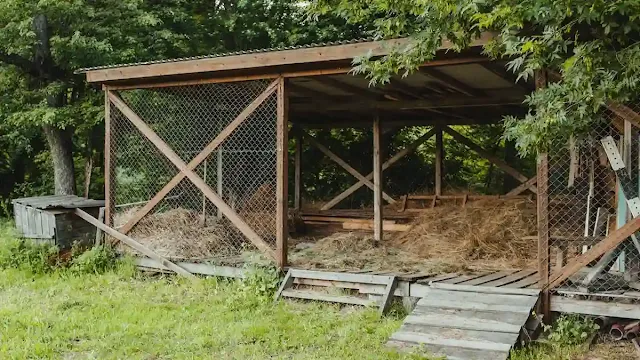 |
| Where to Think About When Building a Chicken Coop |
Is it Cheaper to Buy or Build a Chicken Coop?
When you try to figure out if building your own chicken coop is something you want to do, one of the first questions that comes to mind is whether it is cheaper to buy a premade coop or take on the task yourself. While there may be an initial allure to purchasing a ready-to-go coop, building your own can offer numerous advantages, both economically and creatively.
The Economical Advantage
From a financial perspective, building your own chicken coop can be significantly cheaper than buying one. By sourcing materials yourself and utilizing cost-effective design options, you have full control over the expenses involved. Additionally, you can adapt the construction to suit your budget and make choices that align with your available funds.
Moreover, constructing your own coop allows you to repurpose materials and use recycled resources whenever possible. Not only does this contribute positively to the environment by reducing waste but also helps reduce costs as well. With some creativity and resourcefulness, you can build a high-quality coop without breaking the bank.
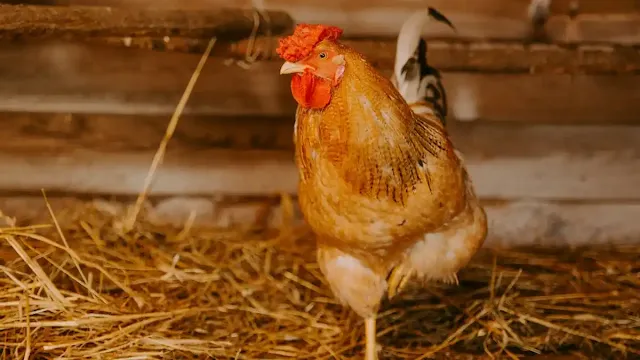 |
| Is it Cheaper to Buy or Build a Chicken Coop |
The Creative Advantage of a DIY Chicken Coop
Beyond financial savings, building your chicken coop offers an opportunity for self-expression and customization. When purchasing a pre-made coop, you are limited to specific designs and features offered by manufacturers. However, when you build it yourself, you have the freedom to tailor every aspect of the coop according to your preferences.
You can select unique materials that add character or incorporate personalized touches that reflect your creativity. Additionally, designing your own chicken coop allows for flexibility in adapting it to fit seamlessly into your existing landscape or architectural style of surrounding structures. The satisfaction derived from creating something truly unique cannot be understated.
Achieving Long-Term Savings
While building a chicken coop may require an upfront investment of time and effort, the long-term savings can outweigh the initial costs. By constructing a coop that suits your specific needs and adheres to best practices, you can ensure its durability and functionality over time.
Furthermore, by building a sturdy coop with good insulation, proper ventilation, and predator-proof features, you can reduce ongoing maintenance expenses. Your chickens will be happier and healthier in a coop designed specifically for their well-being. This translates into lower veterinary bills and increased egg production. In the long run, the investment in building your own chicken coop pays off through reduced costs and greater satisfaction.
How expensive is it to build your own chicken coop?
Building your own chicken coop can be a cost-effective option for poultry enthusiasts. The overall expense of constructing a coop depends on various factors such as the size, materials used, and additional features incorporated. While costs can vary significantly, having a clear understanding of the expenses involved allows you to plan and budget accordingly.
Materials constitute a significant portion of the expenses when building a chicken coop. Opting for affordable yet sturdy materials such as plywood or reclaimed wood can help keep costs down without compromising on quality. Additionally, using recycled or repurposed materials for certain components like doors and windows can further reduce expenses while adding an eco-friendly touch to your project.
The cost of hardware items like nails, screws, hinges, and latches should also be considered. It is advisable to invest in durable hardware that will withstand wear and tear over time. Additionally, incorporating essential features like insulation or ventilation systems may slightly increase the overall expense initially but will contribute to the long-term comfort and health of your flock.
What is the Cheapest Way to Build a Chicken Coop?
When it comes to building a chicken coop, cost is often a significant consideration. Luckily, there are several ways to construct a coop on a budget without compromising the safety and comfort of your feathered friends. By getting creative and using cost-effective materials, you can build an affordable chicken coop that meets all your needs.
Affordable Materials: One of the cheapest ways to build a chicken coop is by repurposing materials you already have or sourcing them inexpensively. For example, consider using reclaimed wood or pallets for the structure's framework and walls. Not only will this save you money, but it also adds an element of rustic charm to your coop.
DIY Design: Another way to cut costs is by designing and building the chicken coop yourself. This allows you to customize the structure according to your specific needs while avoiding labor costs associated with hiring professionals. With an ample supply of online tutorials and resources available, even those with limited carpentry skills can successfully tackle this project.
Budget-Friendly Features: To further reduce expenses, opt for simpler features within your chicken coop design. Focus on essential elements such as easy-to-clean flooring, adequate ventilation, secure doors, and sturdy roosting bars. By prioritizing these aspects over unnecessary embellishments, you can keep costs down without compromising on functionality.
What not to do in a chicken coop?
When it comes to building a chicken coop, there are certain mistakes that can have detrimental effects on the health and well-being of your feathered friends. It is crucial to be aware of these pitfalls and avoid them at all costs. So, let's take a closer look at what not to do when constructing a chicken coop.
Firstly, one common mistake is neglecting proper ventilation. Chickens require fresh air circulation to prevent the buildup of harmful gases like ammonia. Inadequate ventilation can lead to respiratory issues and stress among the flock. Ensure that your coop has windows or vents positioned strategically for cross-ventilation without creating drafts.
Another crucial aspect to consider is avoiding overcrowding in your chicken coop. As tempting as it may be to save space or accommodate more chickens, overcrowding can lead to numerous problems. It increases the risk of disease transmission, stress-related aggression, and diminished egg production. Allow sufficient space for each bird according to their breed requirements, ensuring they have ample room to move around comfortably.
Last but not least, neglecting proper insulation can prove disastrous in extreme weather conditions. Your feathered companions need protection from both cold winters and scorching summers. Failing to insulate the coop adequately can expose them to frostbite or heatstroke. Consider using materials such as straw or insulation boards for walls and ceilings, ensuring optimum thermal regulation inside the coop.
Should chicken coops be raised or ground?
One of the crucial decisions when building a chicken coop is whether to raise it off the ground or keep it at ground level. Both options have their own advantages and considerations, which must be carefully evaluated to ensure the well-being and safety of your flock.
A raised chicken coop offers several benefits. First and foremost, elevating the coop helps protect your feathered friends from potential predators such as raccoons, foxes, or even stray dogs. Predators are less likely to gain access to a coop that is perched above the ground. Additionally, raising the coop allows for better drainage during wet weather conditions, preventing water from seeping into the coop and causing dampness or health issues for the chickens.
However, building a raised chicken coop requires additional materials and construction effort compared to keeping it on the ground. It involves creating a sturdy framework or legs to elevate the structure. This extra work can be seen as an investment in long-term safety and convenience for both you and your chickens.
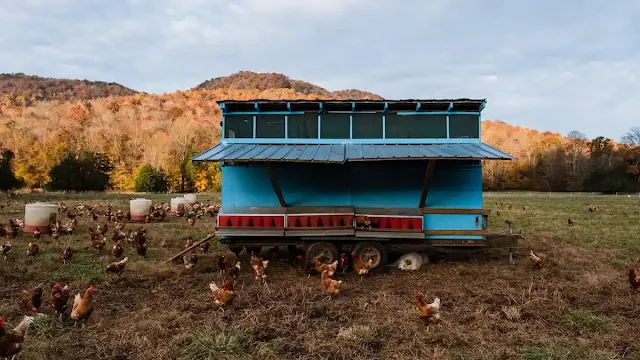 |
| How expensive is it to build your own chicken coop |
What is the best layout for a chicken coop?
When it comes to building a chicken coop, the layout plays a crucial role in ensuring the comfort and well-being of your feathered friends. A well-designed layout not only promotes efficient egg production but also allows for easy cleaning and maintenance. So, what exactly constitutes the best layout for a chicken coop? Let's explore some key considerations.
1. Spacious Living Area:
A spacious living area is essential to provide enough room for your chickens to roam freely and engage in their natural behaviors. Aim for at least 4 square feet of space per chicken inside the coop, allowing them ample space to perch, scratch, and nest comfortably. By providing adequate room, you encourage healthy socialization among your flock while reducing stress levels.
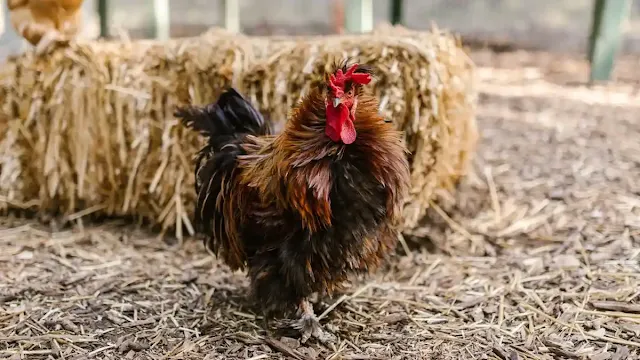 |
| What is the best layout for a chicken coop |
2. Well-Designed Nesting Boxes:
Nesting boxes are where your hens will lay their precious eggs, so designing them with care is paramount. Make sure to include one nesting box per every three chickens to prevent overcrowding and minimize competition. Each nesting box should be cozy, dark, and filled with soft bedding materials like straw or wood shavings, creating an inviting environment that encourages laying.
3. Easy Access to Food and Water:
Your chicken coop should have dedicated areas for food and water that are easily accessible both to you as the caretaker and your feathered companions. Consider installing sturdy feeders that protect against waste or contamination while allowing easy refilling from outside the coop. Similarly, ensure that water sources are clean, secure from tipping over, and regularly refreshed to keep your chickens hydrated at all times.
A thoughtfully designed layout goes beyond aesthetics; it directly affects the overall functionality of your chicken coop. By providing ample space for movement, comfortable nesting boxes, and easy access to essential resources, you are setting the stage for happy and productive chickens. Remember, a contented flock means delicious eggs and a satisfying sense of accomplishment as you watch your feathered friends thrive in their well-planned coop.
 |
| FAQ Chickens |
How big does a coop need to be for a chicken?
When it comes to building a chicken coop, size matters. Providing enough space for your feathered friends not only ensures their comfort but also promotes their overall well-being. The general rule of thumb is to allow at least 4 square feet of floor space per chicken in the coop. This generous allocation enables them to move around freely and engage in natural behaviors such as dust bathing and stretching their wings.
However, it is important to consider that different breeds may have varying space requirements. For larger or more active breeds, providing even more room can be beneficial. Additionally, if your chickens will spend extended periods in the coop due to inclement weather or predator concerns, increasing the size further will help prevent overcrowding and potential issues arising from stress or aggression.
Remember, a spacious coop not only benefits the chickens but also makes maintenance easier for you. Adequate room allows for proper ventilation, reducing humidity levels and preventing the buildup of harmful bacteria. By prioritizing ample space in your design plans, you are setting up an environment that fosters healthy and contented hens.
Is a 4x8 coop big enough for 12 chickens?
When it comes to building a chicken coop, size truly matters. Aspiring chicken keepers often find themselves pondering whether a 4x8 coop can comfortably accommodate twelve feathered friends. Well, let me shed some light on this clucking concern.
First and foremost, it is important to consider the amount of space each chicken needs. The general rule of thumb is to provide at least 4 square feet of coop space per bird. With twelve chickens in mind, a minimum of 48 square feet will be required. A 4x8 coop provides precisely that - 32 square feet.
While strictly speaking, a 4x8 coop falls just shy of the recommended space for twelve chickens, it doesn't mean all hope is lost. If your hens are allowed ample access to an attached run or have free-range privileges during the day, their time spent inside the coop will primarily be for resting and roosting at night.
 |
| Is it OK to mix chicken breeds |
How many roosting boxes do I need for 12 chickens?
When it comes to providing a comfortable and functional space for your flock, ensuring they have enough roosting boxes is vital. Roosting boxes serve as sleeping quarters for chickens, giving them a safe and cozy spot to rest and lay their eggs. The general rule of thumb is that you should have one roosting box for every three to four chickens.
For a flock of 12 chickens, having three to four roosting boxes would be ideal. This allows each chicken enough space to comfortably perch and ensures they can easily access the nesting area when it's time to lay their eggs. Providing an adequate number of roosting boxes also helps reduce the likelihood of disputes or aggression among the chickens, as they each have their own designated spot.
When designing your chicken coop or selecting pre-made coop plans, consider incorporating easily accessible roosting boxes that are well-ventilated and easy to clean. A well-designed coop will not only promote healthy habits but also contribute to happier hens and more abundant egg production.
Where to Find Good Chicken Coop Plans?
When embarking on the exciting journey of building a chicken coop, finding reliable and well-designed coop plans is of paramount importance. Fortunately, there are several sources where you can find an abundance of good chicken coop plans that will guide you towards creating a cozy and functional abode for your feathered friends.
1. Online Resources: The digital realm is teeming with valuable resources for all things chicken-coop related. Numerous websites offer a wide selection of high-quality chicken coop plans, often accompanied by informative articles and step-by-step instructions. Websites such as BackyardChickens.com, TheGardenCoop.com, and ThePoultryGuide.com are treasure troves for aspiring poultry enthusiasts.
2. Farming Magazines: Traditional farming magazines can be an excellent source for finding good chicken coop plans. These publications often feature detailed blueprints and expert advice from experienced poultry keepers. Look out for magazines like Hobby Farms, Mother Earth News, or Countryside & Small Stock Journal, which frequently provide valuable content on raising chickens and building coops.
3. Local Community: Don't underestimate the power of your local community when it comes to gathering information and resources for your chicken coop project. Reach out to fellow chicken enthusiasts in your area through social media groups or local farming organizations. Connecting with experienced individuals can not only lead you to trusted sources for coop plans but also provide firsthand knowledge and practical tips that can make your project even more successful.
In conclusion, whether you choose online resources brimming with modern designs or prefer the wisdom found in traditional farming magazines or local connections within your community, there are plenty of avenues to explore when seeking good chicken coop plans. By arming yourself with reliable instructions and blueprints, you can embark on your coop-building journey with confidence, knowing that you are equipped to create a safe and comfortable haven for your beloved flock.
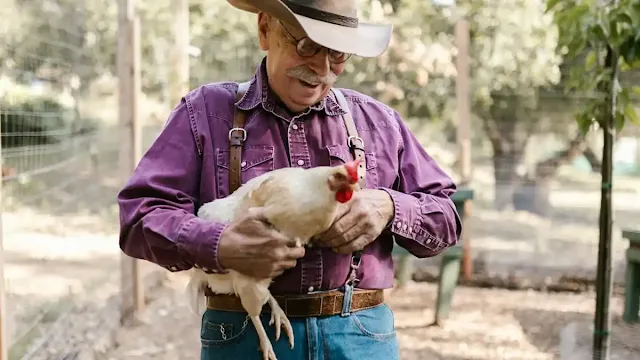 |
| How to Find Affordable Chicken Coop Plans |
How to Find Affordable Chicken Coop Plans?
When embarking on the exciting journey of building a chicken coop, finding affordable and reliable coop plans is essential. The good news is that there are various resources available to help you find high-quality yet budget-friendly designs for your feathered friends' abode.
1. Online Platforms: The internet is a treasure trove of information, and it's no different when it comes to chicken coop plans. Numerous websites offer free or low-cost plans that cater to different budget constraints. Websites like BackYardChickens.com and TheGardencoop.com provide a wide range of designs, complete with detailed instructions and material lists, ensuring that you can create a sturdy coop without breaking the bank.
2. Local Community: Don't underestimate the power of your local community when seeking affordable chicken coop plans. Reach out to fellow chicken enthusiasts in your area through social media groups or local farming organizations. Often, experienced poultry owners are happy to share their tried-and-true designs or direct you to reliable resources where you can find cost-effective plans.
3. DIY Books and Magazines: If you prefer flipping through pages rather than scrolling through websites, consider investing in DIY books and magazines focused on raising chickens or backyard farming. These publications often contain step-by-step instructions for building chicken coops at various price points. Not only will they provide inspiration, but they may also include tips and tricks from seasoned experts in the field.
Remember, finding affordable chicken coop plans doesn't mean compromising on quality or functionality. With these resources at your disposal, you can confidently embark on your construction project while remaining within budget constraints – providing your future flock with both comfort and security!
 |
| FAQ Chickens |
Do you have ANY Questions about Chickens? Leave a reply on one of our FAQ articles, and we will answer you within 24 hrs, or we create a FAQ Chicken Blog Post about your question!
You also can check out Boyd's BIG Feathers Farm YouTube Channel, for more Info about Chickens, Funny Chicken Videos, How to Raise Chickens the Successful Way, Tips & Tricks in DIY Backyard Chickens and other Homesteading Videos! - We hope to see you soon! ~ Boyd from BIG Feathers Farm!
